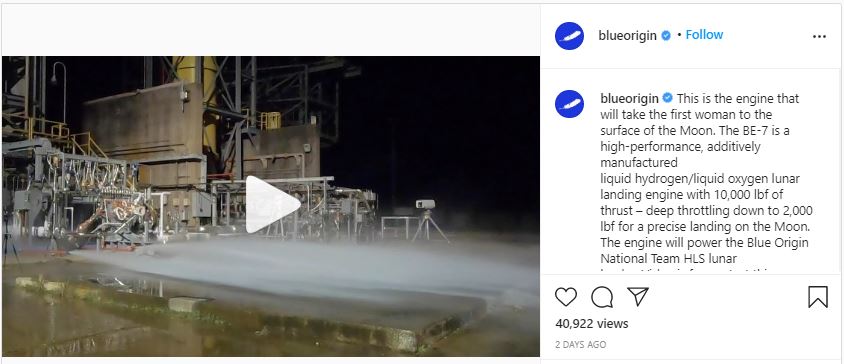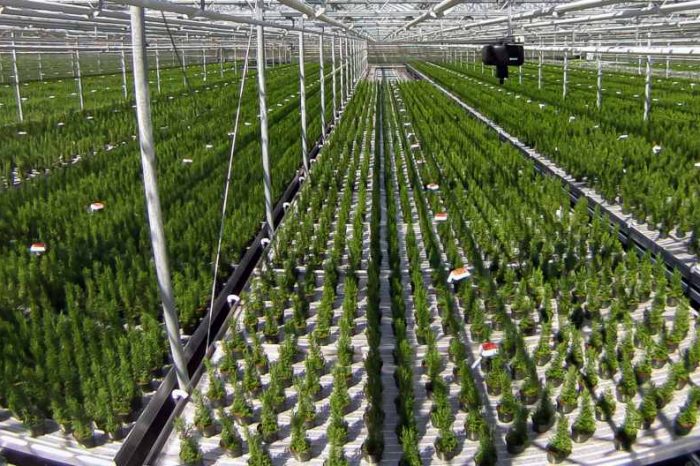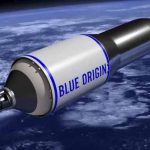Jeff Bezos says Blue Origin will take the first woman to moon’s surface by 2024
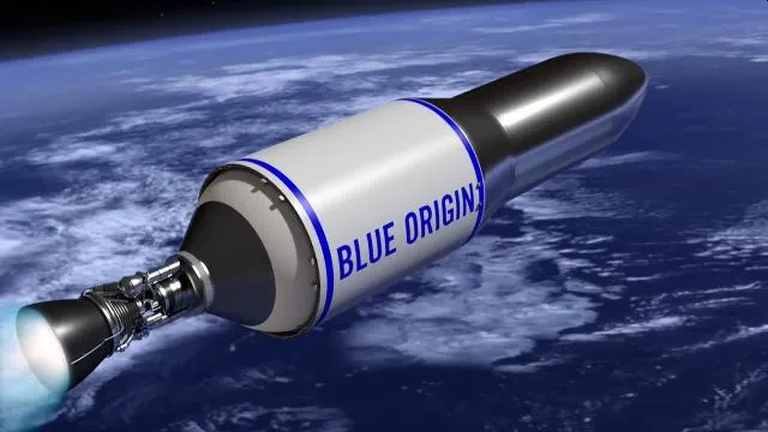
Back in September, we wrote about NASA after the space agency unveiled a $28 billion plan to return humans back to the lunar surface for the first time since 1972. According to NASA, the first mission, known as Artemis I, will begin late next year without astronauts, and Artemis II will fly with the crew in 2023. NASA said it planned on exploring and commercializing the solar system that starts with landing the first woman on the moon in 2024.
Three months earlier, NASA selected Jeff Bezos’ Blue Origin, Elon Musk’s SpaceX, and Dynetics to develop the Artemis Human Lunar Landing System. According to NASA, Blue Origin was tasked with developing the Integrated Lander Vehicle (ILV) – a three-stage lander to be launched on its own New Glenn Rocket System and ULA Vulcan launch system. Since then, Blue Origin has made some progress in the development of the Integrated Lander Vehicle.
Blue Origin is responsible for developing the Descent Element based on the Blue Moon lunar lander and BE-7 engine, both in development for years. Lockheed Martin develops the reusable Ascent Element vehicle and leads crewed flight operations and training, based on Orion. Northrop Grumman provides the Transfer Element vehicle that lowers the HLS vehicle from high lunar orbits, based on Cygnus; while Draper leads descent guidance and provides flight avionics.
Now that NASA is close to making a decision to pick its first privately built lunar landers capable of sending astronauts to the moon by 2024, Jeff Bezos, said in an Instagram post on Friday that Blue Origin will take the first woman to the moon’s surface.
“This is the engine that will take the first woman to the surface of the Moon. The BE-7 is a high-performance, additively manufactured liquid hydrogen/liquid oxygen lunar landing engine with 10,000 lbf of thrust – deep throttling down to 2,000 lbf for a precise landing on the Moon. The engine will power the Blue Origin National Team HLS lunar lander. Video is from a test this week at @nasa_marshall in Huntsville, Alabama — bringing cumulative test time on the program to 1,245 seconds. .
Blue Origin’s team is comprised of Blue Origin, Lockheed Martin, Northrop Grumman, and Draper. The team is working to offer a Human Landing System for NASA’s Artemis program to return Americans to the lunar surface. As part of the mission, Blue Origin is the prime contractor, leading program management, systems engineering, safety and mission assurance, and mission engineering.
NASA said its powerful new rocket, the Space Launch System (SLS), and the Orion spacecraft are closer than ever to their first integrated launch. The spacecraft is complete while the core stage and its attached four engines are undergoing a final series of tests that will culminate in a critical hot fire test this fall.
Early Artemis Missions
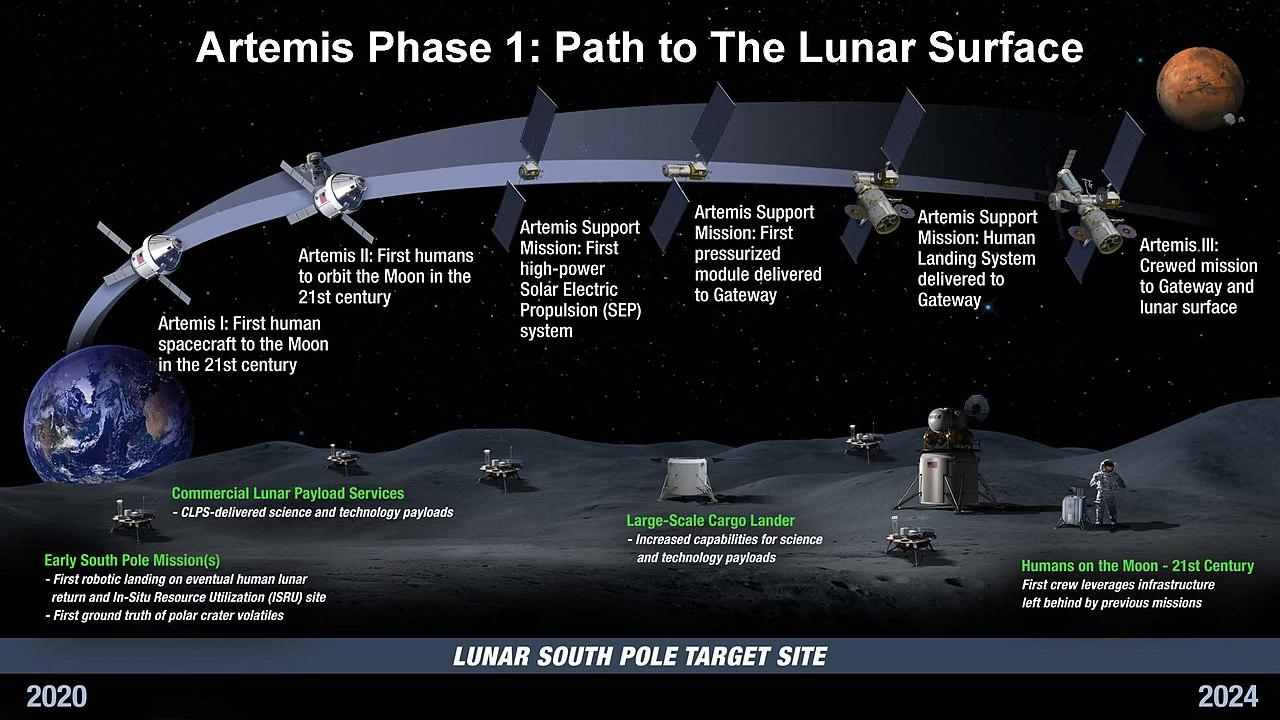
Following a successful hot-fire test, the core stage will be shipped to the agency’s Kennedy Space Center in Florida for integration with the spacecraft. NASA will launch an SLS and an Orion together on two flight tests around the Moon to check performance, life support, and communication capabilities. The first mission – known as Artemis I – is on track for 2021 without astronauts, and Artemis II will fly with the crew in 2023.
In the Phase 1 plan, NASA notes additional details about conducting a new test during the Artemis II mission – a proximity operations demonstration. Shortly after Orion separates from the interim cryogenic propulsion stage, astronauts will manually pilot Orion as they approach and back away from the stage. This demonstration will assess Orion’s handling qualities and related hardware and software to provide performance data and operational experience that cannot be readily gained on the ground in preparation for rendezvous, proximity operations, and docking, as well as undocking operations in lunar orbit beginning on Artemis III.
